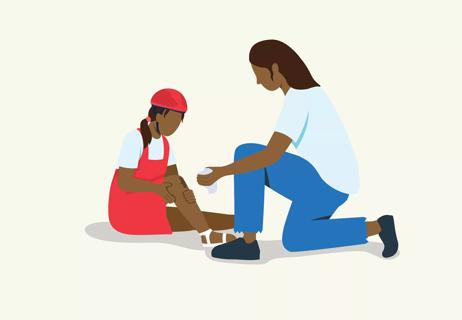Know how long pain should reasonably last

That constant, excruciating pain follows you everywhere and seems to hit at the worst times. You feel that unnerving pain during those important work meetings, while you’re grocery shopping and even playing outside with your kids or grandkids.
Advertisement
Cleveland Clinic is a non-profit academic medical center. Advertising on our site helps support our mission. We do not endorse non-Cleveland Clinic products or services. Policy
But should you grin and bear your arthritis or joint pain, your aching neck or back, or pain resulting from an old surgery or injury? It might be time to see a pain management specialist.
Pain is traditionally considered chronic if it lasts for more than three months, according to anesthesiologist Youssef Saweris, MD. This includes pain that involves the spine or joints, cancer pain, nerve pain, unusual pain of the limbs, prolonged abdominal or pelvic pain, or pain after surgery.
Don’t continue to suffer. If you’ve been experiencing pain for an extended period of time, or if you were under the care of a primary or specialty care physician and are still experiencing pain, it’s time to seek help from a pain management specialist.
“When somebody walks into the clinic, my primary goal is to identify and treat the underlying cause of the pain rather than treat pain as a symptom,” says Dr. Saweris.
Finding the root cause of your pain is the pain specialist’s primary goal. It’s accomplished by collaborating with your primary care physician and other specialists – and carefully listening to your complaints. This enables your pain management specialist to establish an accurate diagnosis that will help determine what’s causing the problem so you can be treated accurately.
Advertisement
Your pain management specialist will create a multidisciplinary treatment plan that is unique to you. This may include:
Treatment goals vary from patient to patient and it’s important to have that conversation with your doctor about what the end goal is. One study found that physicians may have adapted to avoid long-term opioid therapy while their patients continued to focus on reducing chronic pain intensity.
“For every patient, the goal is to diagnose the problem, to restore and optimize function and to decrease pain,” says Dr. Saweris. “In addition, every visit is an opportunity to address favorable lifestyle changes.”
You and your pain management specialist will look deeper at the original cause of your chronic pain. To take steps to help fix and prevent future problems, Dr. Saweris recommends:
“Simple lifestyle changes, such as learning how to cope with stress and good sleep hygiene, can lead to improvements in your level of pain and long-term quality of life,” says Dr. Saweris. “We are here to guide you through these changes as you acquire and embrace them as a part of your new daily routine.”
While there isn’t a one-size-fits-all when it comes to finding treatment, the sooner you see a pain management specialist, the sooner you’ll be on your way toward getting the help you need and the quality of life you deserve.
Advertisement
Learn more about our editorial process.
Advertisement

Both can help reduce pain, but they’re very different in terms of origins, philosophies and practices

Simple exercises like tendon glides and finger lifts can have a big impact

Not all signals of physical pain actually make it to our brains — and you have some power over it

This analogy can help you explain the daily struggle of chronic pain

The short answer from a pain specialist

The short answer from a neurologist

Most recommended precautions center around minimizing bruising or swelling

Type 2 diabetes isn’t inevitable with these dietary changes

Applying a hot or cold compress can help with pain